exoskeleton
Latest
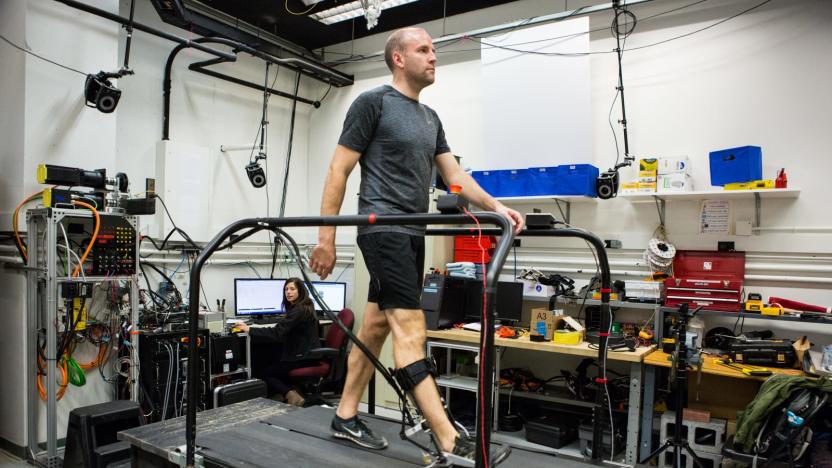
An algorithm customizes exoskeletons to fit a person's needs
Scientists have been studying exoskeletons in nature for years, and they've been trying to figure out how to adapt them for human use. After all, a powered exoskeleton could change the lives of people who have mobility issues, whether due to age, injury or disease. The problem is that exoskeletons aren't one size fits all. Adapting them to individual humans is a difficult and time-consuming process. But now, researchers at Carnegie Mellon University may have found a way to make it a whole lot easier.

Lowe's exoskeletons help workers carry what you can't
Exoskeletons aren't just for shipyard workers or people with limited mobility. If Lowe's has its way, they'll help store staff fetch your giant bucket of paint. The home improvement retailer has partnered with Virginia Tech to test prototype passive exoskeletons that make it easier to haul heavy objects. Carbon fiber in the suits' back and legs serves as a "taut bow" that stores energy when you bend down -- that energy comes back the moment you stand back up, making it much easier to lift that heavy bag of concrete. The material's flexible nature should also help the suits feel relatively comfortable... a rather important consideration for warehouse workers who may need to wear it for an entire shift.

Hyundai wants to make exoskeletons cheaper
Exoskeletons are nothing new. You put one on and become a low-level Iron Man, able to lift items that would normally snap your spine. The drawback is they can be prohibitively expensive, but Hyundai thinks it can lower the cost of these exosuits that not only give us the ability to lift more, but can also help disabled people walk once again.

suitX's modular exoskeleton can prevent work-related injuries
suitX, a robotics company out of University of California, Berkeley's Human Engineering Lab, launched an exoskeleton that can help people walk again earlier this year. Now, the company has officially launched another product: one that can prevent people from needing that exoskeleton in the first place. suitX's latest product is called MAX, or Modular Agile eXoskeleton, and it supports a person's body parts prone to getting injured while doing heavy physical work.

The Engadget Podcast Ep 11: Everybody Hurts
Managing editor Dana Wollman and senior editor Mona Lalwani join host Terrence O'Brien to talk Macbook rumors, Amazon ISP ambitions and Julian Assange. Then they'll talk about all the work that went into Engadget's five part series covering the world's first cyborg games, Superhumans and look at VR's ability generate empathy.

The first Cybathlon pushed the limits of bionic technology
Andre van Rüschen slowly climbed a five-step ramp at the end of his race. With a black processor strapped to his back and leg supports on either side of his lower limbs, he stayed focused on the body-machine coordination that was keeping him upright. He had walked over a wooden slope, criss-crossed bright yellow bars and tried to step on gray discs that were placed irregularly on the floor. Now, standing atop the last obstacle in the exoskeleton race, he took a moment to pause and look up at his opponent on the adjacent track. They were both on the ramp, going head-to-head at the world's first Cybathlon, a sporting competition designed for people with severe disabilities. The crowd inside the Swiss Arena in Zürich cheered them on. Van Rüschen, the German pilot who was using a ReWalk exoskeleton, quickly regained his focus and prepared to walk down the next five steps to complete the race. He hit a button on the remote around his wrist to change the settings from "walk" to "climb" and quickly adjusted his upper body to balance his weight on the crutches in his hands. With his competitor, Mark Daniel, right on his heels, he leaned forward to pick up the pace.
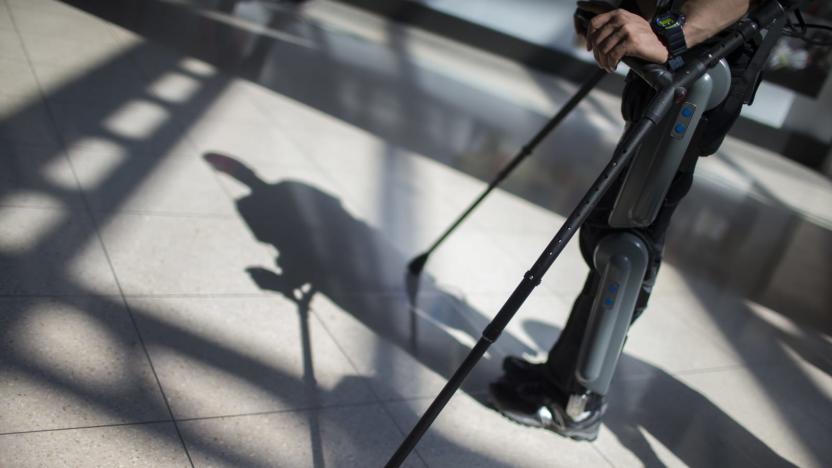
Pushing the limits of exoskeleton technology at the Cybathlon
Andre van Rüschen has no memory of the day he lost all feeling in his legs. After a car accident in Germany, he had a spinal cord injury that left him paralyzed from the waist down. When he woke up from a coma in a hospital in Hamburg, the doctors told him he would never walk again. But now, thirteen years later, van Rüschen is back on his feet, and he is training to compete as a pilot in the Powered Exoskeleton race at the Cybathlon in Zurich this month.

Human and machine become one for birth of the Cybathlon
On a bright Tuesday morning, about six miles north of Zürich, an ice-hockey team skates onto a rink for a practice round. Each player, dressed in a white jersey and matching protective gear, slides a puck in the direction of a heavily padded goaltender. The little discs swish across the floor in a black blur before smashing against the peripheral walls in loud thuds that echo throughout the Swiss Arena. The arena is home to the Kloten Flyers, Switzerland's leading hockey team, who regularly play to a packed house. But in less than a month, the icy floor inside the country's largest indoor venue will transform into a race course for a different kind of sporting event. On Oct. 8th, the stadium will open its doors to the world's first Cybathlon, a multidiscipline competition for people with disabilities who use bionic technologies to augment their bodies.

Wii U balance boards help paraplegics better use their exosuits
Able-bodied people maintain their balance in part by the sensory feedback receive through our feet. People with severed spinal columns don't receive those sensations which, even though they are being supported by a mechanical exoskeleton, makes standing difficult. That's why a team of researchers at the Florida Institute for Human and Machine Cognition have begun teaching neophyte exoskeleton wearers to regain their sense of balance by standing atop a Wii U balance board.

ICYMI: Pinterest's photo recognition and light exosuits
try{document.getElementById("aol-cms-player-1").style.display="none";}catch(e){}Today on In Case You Missed It: Pinterest wants users to shop for items by taking pictures, then uploading to the site to find similar items. Carnegie Mellon University invented an exoskeleton component that would lighten suits and make them far easier to walk around in, minus the bulky metal frames. NASA tested a rocket booster this week that may one day go to Mars. As always, please share any interesting tech or science videos you find by using the #ICYMI hashtag on Twitter for @mskerryd.

Electrostatic sheets promise super-light exoskeletons
Of all the reasons exoskeletons aren't widespread, weight is one of the biggest. Even the slickest designs still tend to need bulky machinery. Not at Carnegie Mellon University, however -- its researchers have developed an exoskeleton clutch mechanism that barely weighs anything. Their Electroadhesive Clutch, as the name suggests, relies on electrostatic adhesion between specially coated electrode sheets to control spring movement. At 0.05 ounces per pair, it's 30 times lighter than existing clutches, and uses up to 750 times less power. Even if you had hundreds of clutches, the robotic assistance would take a huge strain off your body. And did we mention that there's three times as much torque density?

ICYMI: Trees rest their branches at night
try{document.getElementById("aol-cms-player-1").style.display="none";}catch(e){}Today on In Case You Missed It: There's no doubt you'll be well-acquainted with everything that happened with LinkedIn, Apple and XBox, so today's show will look just a little different. I focused the show on just one story to get a little more into the details on a study out of Europe that tracked how trees relax their branches at nighttime. We also threw in the video of the first child-sized exoskeleton suit, just because. As always, please share any great tech or science videos you find by using the #ICYMI hashtag on Twitter for @mskerryd.
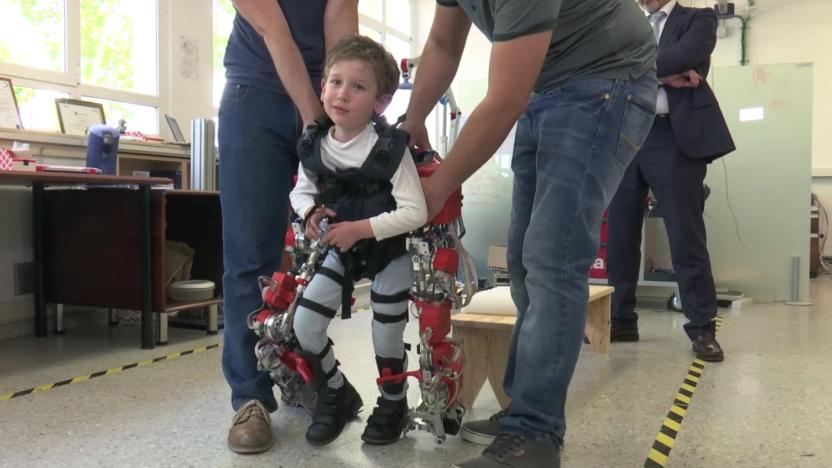
World's first child-sized exoskeleton gets kids on their feet
The Spanish National Research Council, a.k.a. CSIC, has created a kid-sized exoskeleton designed specifically for children suffering from spinal muscular atrophy. Because SMA causes a loss of motor neurons, the patient's body starts to wither away to the point where many child patients end up bedridden and unable to walk. Built from aluminum and titanium, the 26-pound machine uses five assistive motors in each leg to actually help the child keep active and avoid further complications from immobility.

A 'smart' exosuit learns its user's movements
As military and heavy-lifting applications for robotic exoskeletons get closer to reality, the latest trend in wearable machinery is helping the elderly and those with limited mobility get back on their feet. Like their colleagues/competitors at Harvard and ReWalk Robotics, the team behind the Superflex have developed a soft robotic exosuit that could do everything from heavy lifting on the battlefield to replacing grandma's walker.
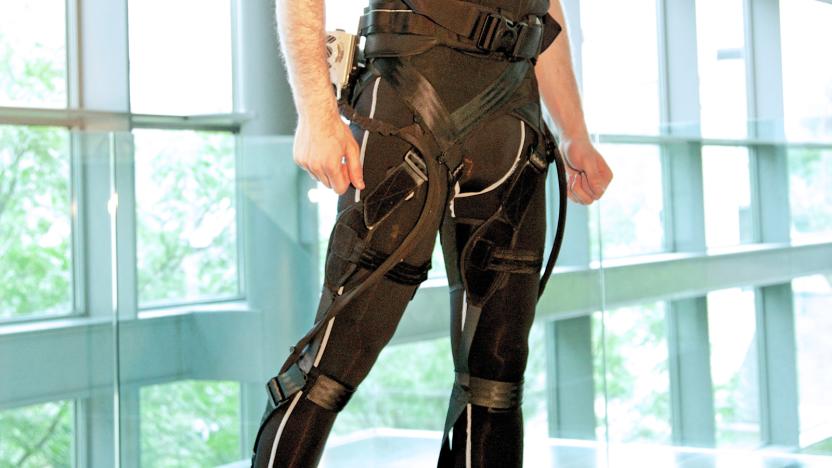
Harvard engineers designed a 'soft wearable robot'
A team of engineers from Harvard University's Wyss Institute for Biologically Inspired Engineering have moved one step closer to a consumer version of a soft, assistive exosuit that could help patients with lower limb disabilities walk again. The Wyss Institute announced today that the university is collaborating with ReWalk Robotics to bring its wearable robotic suit to market.

Hyundai is working on a real-life 'Aliens' exoskeleton
Lots of companies are working on exoskeleton suits, but most are designed to slightly increase your lifting capacity, prevent injuries or help you empathize. Not Hyundai, though -- the South Korean automaker is aiming for something more extreme with a "wearable robot" that it likens to an Iron Man suit. Workers piloting the device can lift objects weighing "hundreds of kilograms," according to the company. Soldiers can also use it to pack up to 50 kilograms (110 pounds) over long distances.

Panasonic shows how its robotic suits ease your burden
If you ask Panasonic, the future is full of wearable robotic assistants... lots of them. The Japanese tech giant has posted a video highlighting all the exoskeletons and service robots it's working on, and it's clear that the company wants to bring bionics to just about every facet of life. The Assist Suit (shown above) and Ninja respectively boost your lower back and legs, helping you lift heavy warehouse boxes or climb steep mountains. The Power Loader (directly inspired by Aliens), meanwhile, should help during construction work and disasters.
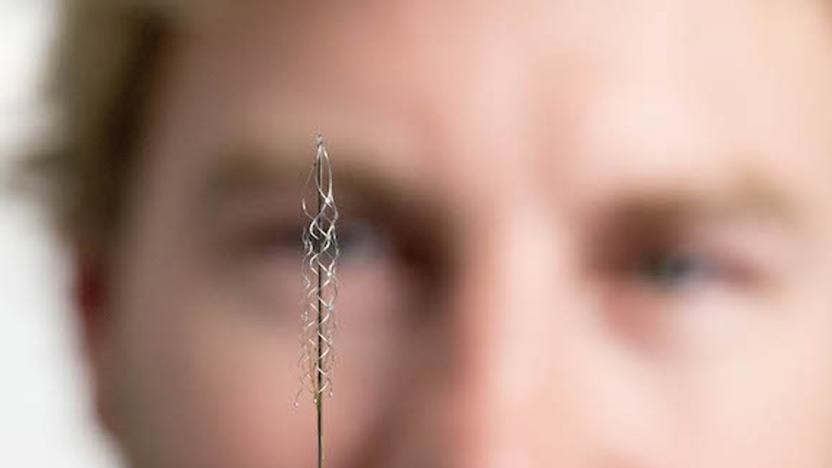
Brain-machine link helps you steer exoskeletons with your mind
Right now, mind-controlling a machine isn't pretty: you typically wear a silly cap or headset, or else subject yourself to open brain surgery to get a deeper link. Australian scientists might have a better way, though. They've developed a brain-machine interface that taps into your motor cortex through a relatively simple operation -- you won't need to gamble with your health to have a permanent connection to robotics. The device (known as a stentrode) would let you directly steer an exoskeleton or artificial limb through thoughts alone, even if you need the implant for "many months" at a time.

suitX launches lightweight and affordable exoskeleton
suitX, the robotics company out of University of California, Berkeley's Human Engineering Lab has launched its first exoskeleton after years of development. It's called Phoenix, a relatively lightweight and affordable device that can help people with mobility disorders walk again. The wearable robot is adjustable according to size and can be put on and removed piece by piece. Its battery can power four hours of continuous walking (at a max speed of 1.1 mph) and up to eight hours of intermittent movement. Best of all, the Phoenix weighs only 27 pounds and costs $40,000.

ICYMI: Cheaper exo suits, radical plane design and more
#fivemin-widget-blogsmith-image-132582{display:none;} .cke_show_borders #fivemin-widget-blogsmith-image-132582, #postcontentcontainer #fivemin-widget-blogsmith-image-132582{width:570px;display:block;} try{document.getElementById("fivemin-widget-blogsmith-image-132582").style.display="none";}catch(e){}Today on In Case You Missed It: A Berkeley robotics company is building exoskeleton suits for children with neurological conditions. Australian scientists are testing an implantable bionic eye. And a Ukrainian inventor is proposing to redesign planes with a detachable section that could land safely in case of an in-flight disaster.








